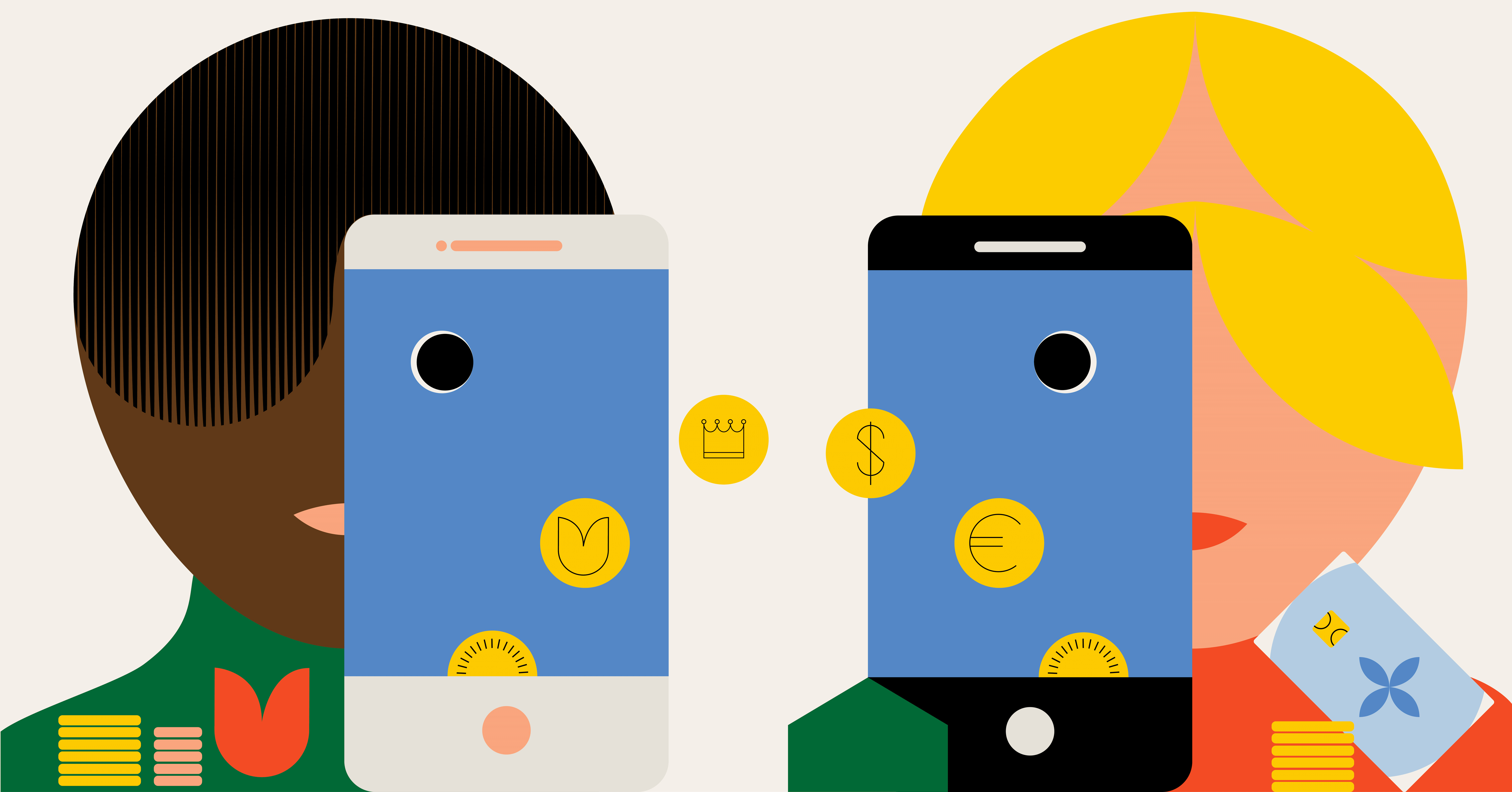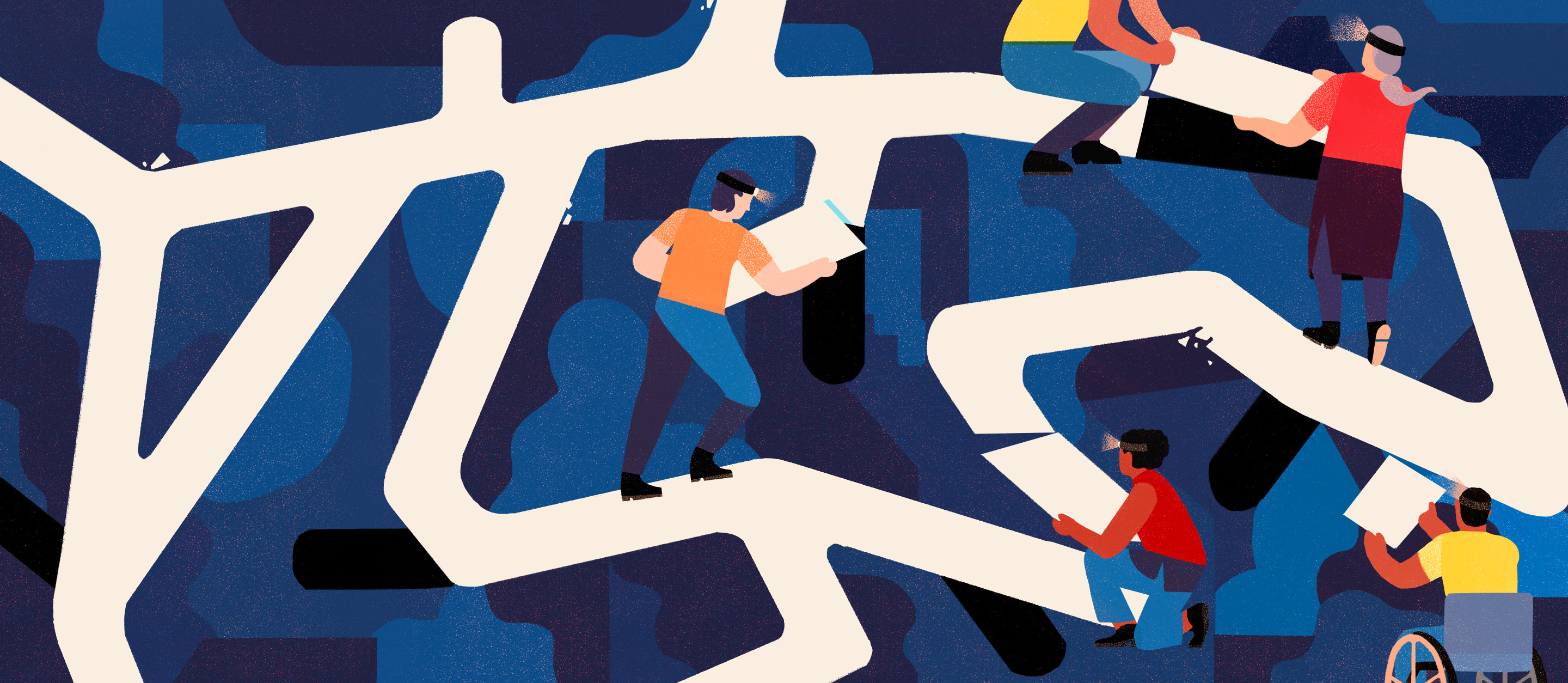Your Competitors Aren’t Who You Think They Are

The bike shop in my neighborhood recently started serving beer. They keep a keg on ice in the back room, and customers can sip pints as they browse the bicycles, gear, and hardware. I was curious what was behind the move, so I asked the owners. They told me they’d been trying to figure out how to get customers to spend more time in the store, and hopefully to make a purchase, so they decided to take a page from another industry’s book.
By looking to the neighborhood pub down the block, it was easy to see that if they wanted to keep customers around longer, they needed to have a similarly linger-worthy offering. It seemed to be working.
In an age when boundaries between sectors are blurring, traditional businesses need fresh approaches that keep them relevant, even as the tech titans add capabilities that could eclipse the old guard. When leaders are willing to look beyond their own industry for inspiration and ideas, they often gain a competitive advantage.
The financial services industry is a perfect candidate for this kind of approach. Money is changing in radical ways, and along with shifting regulatory environments at home and abroad, we increasingly find new players entering the financial space. It often seems like the future of financial services is being designed outside the domain of the industry giants, which begs the question: Are traditional financial firms equipped, at present, to satisfy customer needs? People want convenience and access, security, privacy, social features, comfort, experiences, and a range of incentives—many of which are more readily supplied by a digital platform than a stately bank. But some traditional players are taking a new tack.
When the first Capital One Café opened in late 2015, the bank was attempting to address these very concerns. Millennials, having come of age around the 2008 financial crisis, harbored a well-documented distrust of traditional banking and felt turned off by the branch experience, so Capital One attempted to reinvent the bank branch in the image of a coffee shop and coworking space—again, looking outside their industry for inspiration. “Customers are over the corporate thing,” a bank representative said. It’s hard to imagine someone would choose to enjoy their coffee inside a bank if other café options are available, yet by most measures Capital One’s experiment has been a success, offering a more welcoming and attractive experience than speaking to a teller through bulletproof glass. By innovating on the experience, Capital One has entered retail banking in a novel way.
The late Harvard academic Clayton Christensen developed the concept of “jobs to be done,” arguing that customers have a need to get a job done, rather than a need to acquire a specific product or service. It’s a slight but important turn of the dial from the traditional way of thinking. Here’s how legendary economist Theodore Levitt described the idea back in 1969: “Last year 1 million quarter-inch drills were sold, not because people wanted quarter-inch drills but because they wanted quarter-inch holes. People don’t buy products; they buy the expectation of benefits.” To advance the argument a step, perhaps what the customer needs isn’t a one-inch hole but the ability to hang a picture. Maybe an adhesive hook would do the job better than a drill.
Innovation is often driven by the urgent need to solve a problem. In 1922, a group of army officers observed that returning soldiers, who hadn’t driven cars while on active duty, had a hard time getting auto insurance. The officers formed the United Services Automobile Association to provide insurance to military members and their close family. Later USAA expanded to offer a wider range of services including banking, investment, and other types of insurance. Since their members were often scattered geographically—sometimes on the other side of the globe—USAA pioneered mobile banking, initially by phone and mail and later online. Even today, with almost 13 million members, USAA has only one full-service bank branch, located in San Antonio.
This company, which was founded to offer auto insurance to service members, is now regarded as a shining example in the banking world of loyalty and customer satisfaction. Several of my clients who work at major retail banks have admitted to me in private that they still do their personal banking at USAA because they so admire the firm’s customer service. From that original need in 1922, USAA created a new service model that has lasted nearly a century.

Many of today’s most inspiring models for innovation are scattered globally. The European Union’s Open Banking efforts have created fertile conditions for EU mobile-first banks such as N26, Starling Bank, and Monzo. These firms score off the charts in customer satisfaction rankings, above even USAA’s benchmark. In the EU, mobile-first banks have grown through a mix of purpose and convenience, the human-centered design of their interactions and offers, and a supportive regulatory environment.
Alipay in China—which has a staggering 900 million users—is a smartphone wallet app that has revolutionized mobile payments, including the development of “Smile and Pay,” facial recognition technology that allows consumers to pay for goods without even carrying their mobile device. Alibaba has aggressive plans for global expansion of Alipay, all but guaranteeing that domestic US firms will come into direct competition with the Chinese juggernaut.
In many African countries, citizens have so little faith in their nations’ financial stability and fiat currency that a new kind of money has emerged: prepaid mobile phone minutes. People pay for a broad range of goods and services—from procuring groceries to settling their electric bills—by transferring mobile phone minutes. Kenya’s most ubiquitous service, with more than 30 million users, is m-pesa, launched by the country’s top mobile phone companies, Vodafone and Safaricom. Who would have thought that mobile phone companies would emerge as the central disruptors in Africa’s financial services sector, disintermediating the banks?
The financial world has been slower to innovate than, say, the technology world, for a few key reasons. First, financial firms haven’t been forced to innovate at the same pace; second, regulation has disincentivized competition; third, most radical thinkers are no longer drawn to the financial services, as the center of action has moved to Silicon Valley.
Millennials comprise the largest population in our workforce, and three-quarters of them say they’d prefer a financial offering from a large technology company over one from a traditional financial services firm. And the tech world is responding. The Apple Card recently launched in an effort to redesign the credit card and disrupt the status quo. PayPal and Venmo, beyond their use as payment services, essentially function as savings accounts for many customers who store money in the app. And millennials aren’t the only focus of this evolution: A handful of new firms, such as EverSafe, have introduced new products that help the elderly population manage their bills and protect against financial exploitation.
Money is always changing—the way it moves, the shape of it, and how we store it. Financial services firms need not only to keep pace, they need to be leaders of innovation. New solutions could come from unexpected places, so it’s critical to take a global perspective, benchmark beyond industry peers, and consider the experience of the people providing and receiving services. Building the next 100-year financial services firm will depend on doing all of these.
Illustration by Emil Wikström
Words and art

Subscribe

.svg)









